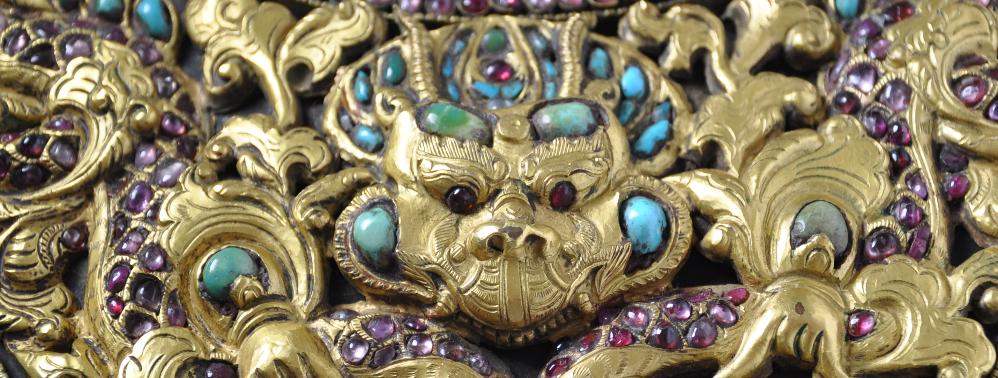
Nepalese Gilded Chest Ornament
Superb Gilded Silver Breast Plate (Suta or Konchi) set with Rubies, Pearls & Turquoise
Kathmandu Valley, Nepal
18th-19th century
width of plate: 21.5cm, height of plate: 21cm (including drop pearl), weight: 328g
This impressive breast plate of crescent form, comprises pierced and gilded (gold plated) silver plaques in scrolling form against a silver backing plate. The front is inset with dozens of pearls and ruby and turquoise cabochons. A large baroque mother-of-pearl cabochon is suspended from the base of the breast plate.
The from is decorated in high relief with a central large, horned
kala mask with cheeks and forehead set with large turquoise cabochons and eyes set with rubies.
The
kala is surrounded by foliage and two addorsed dragons with bodies that twist away from the mask and with their scaly bodies set with rubies.
The upper section of the breast plate is demarcated with a border of pearls and rubies. The outer rim of the breast plate is set with turquoise cabochons in petal-like box settings.
The reverse of the plate comprises a plain, hammered silver sheet with gilded silver edging.
The plate is suspended from multi-coloured cotton strands.
The breastplate might have been worn as a necklace in its own right, or could have been attached from a crown and worn as a breast plate perhaps for use by a member of the Rana aristocracy.
See Gabriel (1999, p. 24) for a related breastplate attributed to the late 18th century, and Clarke (2004, p. 59) for a breastplate worn suspended from a crown, attributed to the 18th or 19th centuries.
The plate has an excellent patina; it clearly has significant age. There are some old losses to the stones and no doubt some stones are old replacements. Overall, this is a magnificent piece.
References
Clarke, J., Jewellery of Tibet and the Himalayas, V&A Publications, 2004.
Gabriel, H.,
Jewelry of Nepal, Thames & Hudson, 1999.
Provenance
UK art market
Inventory no.: 3680
SOLD

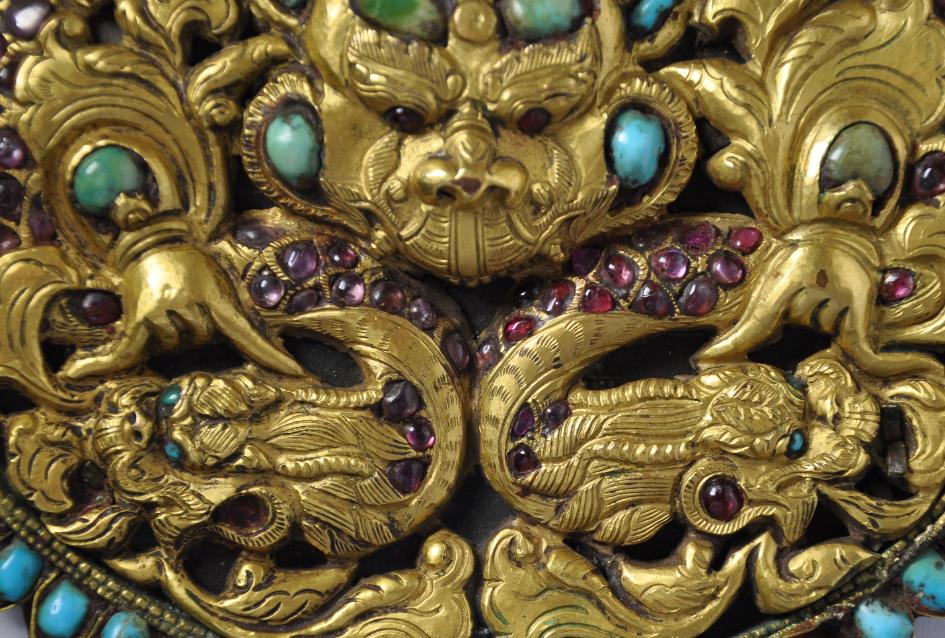
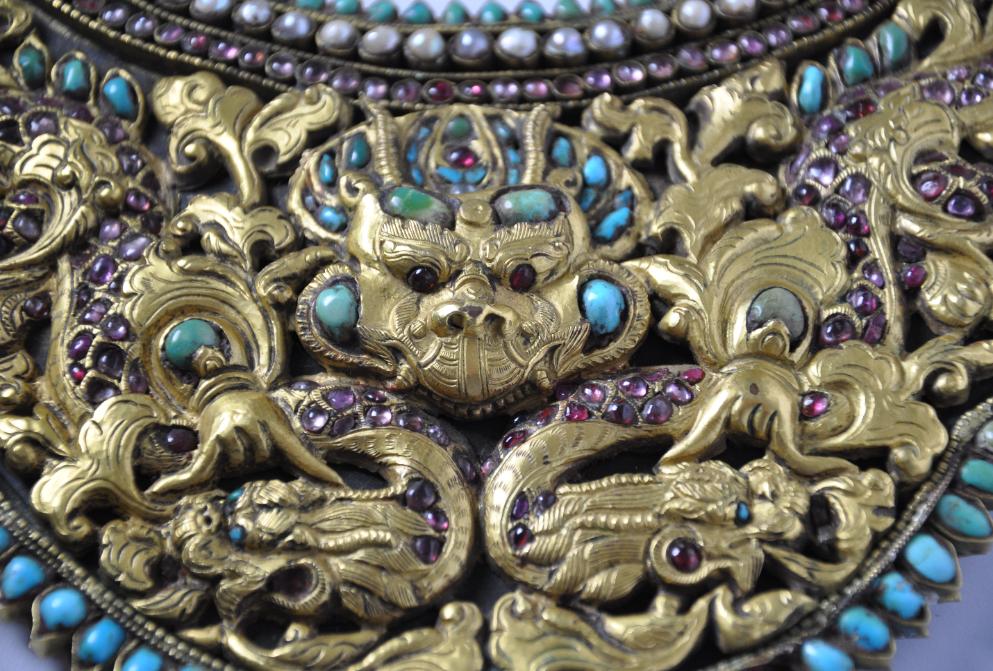
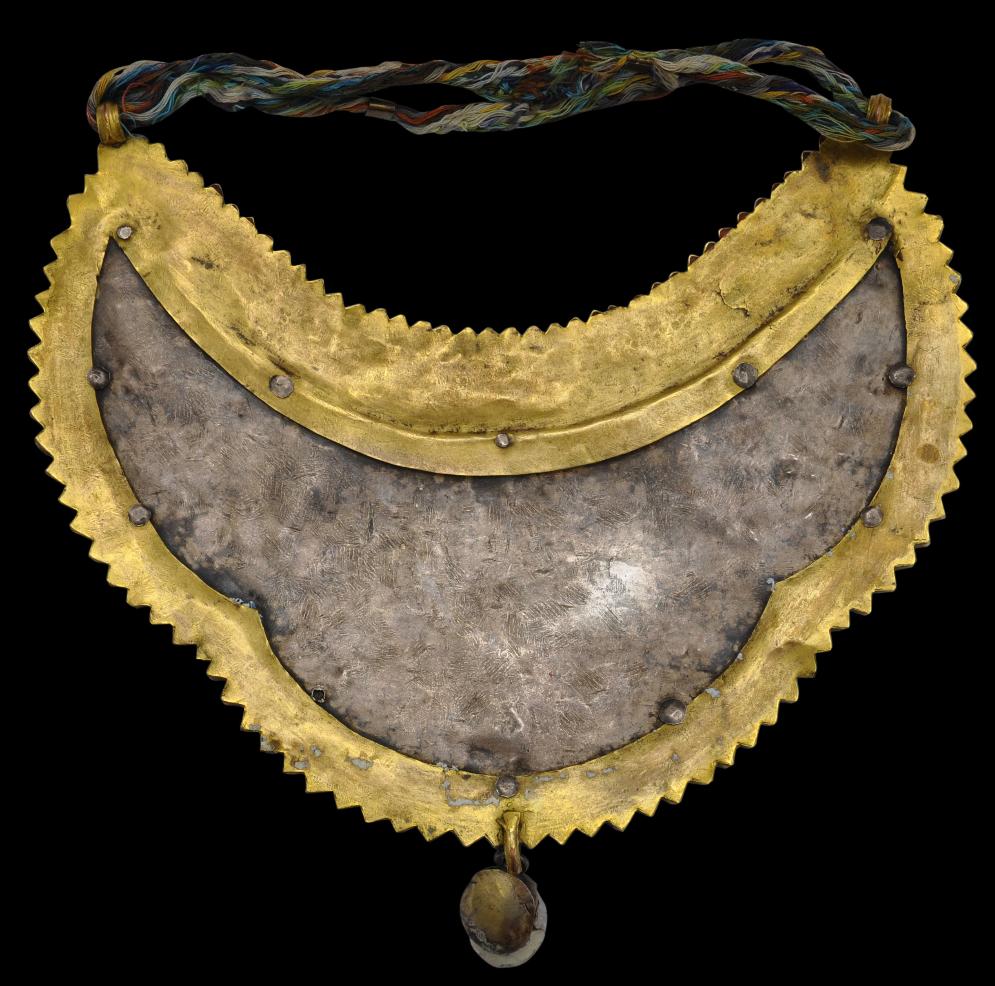
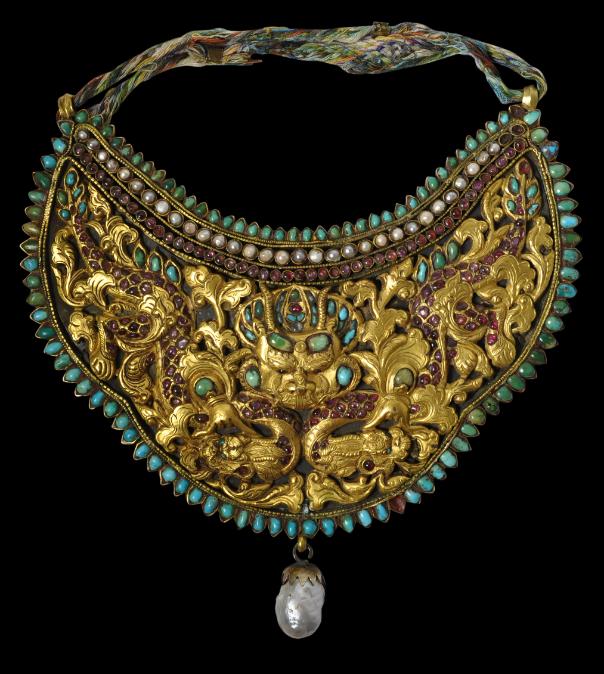


A Nepalese ceremonial crown dating to around 1850 that in the British Museum. The breast plate here might have been worn in conjunction with such a crown.

